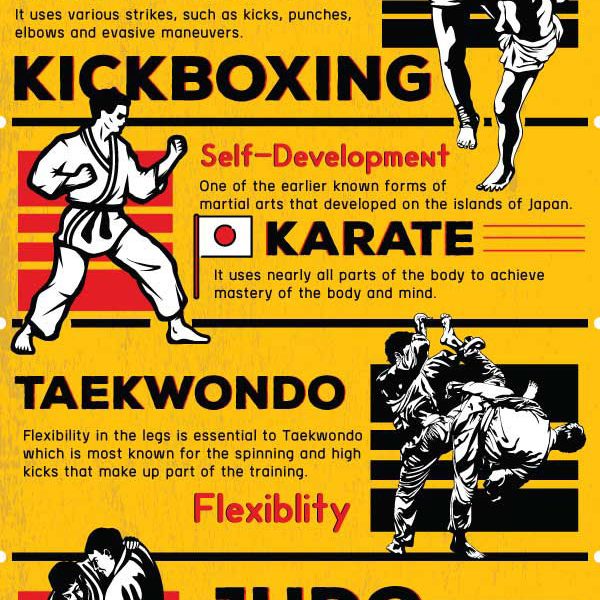Discovering The Rich Heritage And Spiritual Measurement Of Martial Arts: A Detailed Assessment
Discovering The Rich Heritage And Spiritual Measurement Of Martial Arts: A Detailed Assessment
Blog Article
Created By-Rafferty Patterson
Step into the ancient globe where martial arts were born out of necessity in varied regions. Cultures crafted distinct combating designs linked with historic contexts. Techniques advanced over centuries through committed practice and cultural exchanges. elite martial arts , modern martial arts mix typical elements for optimal performance. Philosophically, martial arts highlight self-control, self-improvement, and harmony. Respect, humility, and balance are foundational concepts directing practitioners towards development and strength. Explore the midsts of this abundant history and philosophy to discover the extensive impacts forming this long-lasting self-control.
Beginnings of Fighting Style
Martial arts originated in various regions worldwide, advancing as functional fight systems to resist threats. These old fighting styles were developed out of necessity, with each society crafting techniques matched to their special environments and obstacles. From the grappling arts of Jujutsu in Japan to the striking methods of Martial art in China, martial arts were deeply linked with the historic, social, and social textile of their respective societies.
In Japan, the samurai class refined martial arts like Kenjutsu, the art of the sword, which later progressed right into the more popularized kind of Kendo. Meanwhile, in Brazil, Capoeira emerged as a mix of dancing and fight, produced by enslaved Africans as a means to withstand oppression. Each martial art carries with it an abundant background and approach, showing the worths and beliefs of the people that exercised them.
As you delve into the beginnings of martial arts, you uncover a tapestry of human ingenuity, durability, and the stubborn spirit of warriors throughout time.
Development of Strategies
With centuries of practice and improvement, battle strategies within numerous martial arts have gone through an extensive development. From ancient styles like Martial art and Karate to a lot more contemporary disciplines such as Brazilian Jiu-Jitsu and Krav Maga, the evolution of methods has been driven by a combination of social influences, functional applications, and technological innovations.
One substantial element of this advancement is the cross-pollination of methods between various martial arts. For instance, techniques from traditional Japanese Jiu-Jitsu were incorporated into the creation of Judo by Jigoro Kano in the late 19th century. This blending of designs has resulted in the development of hybrid martial arts like Mixed Martial Arts (MIXED MARTIAL ARTS), which incorporate components of striking, grappling, and entry methods.
In addition, the advancement of methods has been formed by the enhancing emphasis on performance and performance in fight. Experts have continuously looked for to fine-tune their techniques with extensive training, trial and error, and competition, leading to the development of highly specialized and reliable battling designs. Generally, the evolution of techniques in martial arts shows the dynamic nature of battle and the continuous quest for improvement and innovation.
Thoughtful Structures
Exploring the underlying thoughtful principles of martial arts gives insight into their core values and leading ideas. At the heart of lots of martial arts disciplines is the concept of self-control itself. By training your mind and body to serve as one cohesive device, you grow technique that prolongs beyond the dojo or health club into daily life. https://www.lowkickmma.com/fighter-suffers-horrific-leg-ankle-injury/ incorporates respect, humbleness, and self-control, shaping not just your physical capacities yet additionally your character.
Another fundamental thoughtful foundation in martial arts is the idea of continuous self-improvement. The trip of understanding a martial art is relentless, with experts continuously making every effort to far better themselves, both literally and psychologically. This focus on growth fosters resilience, willpower, and a growth attitude that can be applied to all facets of life.
Moreover, martial arts highlight the relevance of consistency and equilibrium. Techniques are developed to make use of a challenger's energy versus them, highlighting the principle of yielding and rerouting force rather than meeting it head-on. This philosophy encompasses interpersonal relationships, advertising tranquil resolutions and good understanding. By welcoming these philosophical foundations, martial artists not only boost their combat abilities yet also grow a way of living centered on individual development, regard, and consistency.
Conclusion
To conclude, the background and approach of martial arts offer an abundant tapestry of tradition, self-control, and self-improvement.
Take for instance the tale of Bruce Lee, that reinvented martial arts by blending various designs and ideologies to create his own distinct kind of Jeet Kune Do.
With devotion and advancement, martial artists continue to push boundaries and motivate others to reach their full potential both in combat and in life.
